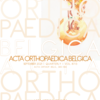Economic advantage of ‘self-made’ antibiotic-loaded spacer compared to prefabricated antibiotic-loaded spacer and spacer molds in two-staged revision arthroplasty
economic analysis ; spacer ; prosthetic joint infection ; two-stage exchange
Published online: Nov 22 2021
Abstract
Infection after total hip or total knee arthroplasty is a serious complication implying great costs for the health care system. Amongst the different treatment options, the two-step exchange using a spacer in the interval is a valid option. We evaluate the economic impact of our self-made antibiotic-loaded hip and knee cement spacers compared with prefabricated spacers and spacer molds.
Costs to prepare self-made cement spacers are detailed for each spacer type. We also assess the intraoperative time spent for fabricating our self-made hip and knee spacers.
The price of these self-made knee spacer is 514 CHF (450 EUR / 505 USD) if non-articulated and 535 CHF (470 EUR / 525 USD) if articulated ; the price for the self-made hip spacer is 749 CHF (760 EUR / 735 USD). Our average preparation time is 14 minutes for our self-made knee spacers and 16 minutes for our self-made hip spacers. While the senior surgeon is fabricating the self-spacers, another surgeon of the team continues intensive irrigation and debridement. Thus, no time is lost waiting for the self-spacer to be fabricated.
In our hands, self-made hip and knee spacers are at least 40-50% cheaper than prefabricated spacers and spacer-molds. This is a serious economic advantage in this already expensive surgery. When done in teamwork, self-spacer fabrication does not increase the surgery time. The economic advantage is added to the main and most important advantage of self- made spacers, which remains the possibility of patient adapted anatomical reconstruction of the joint.
